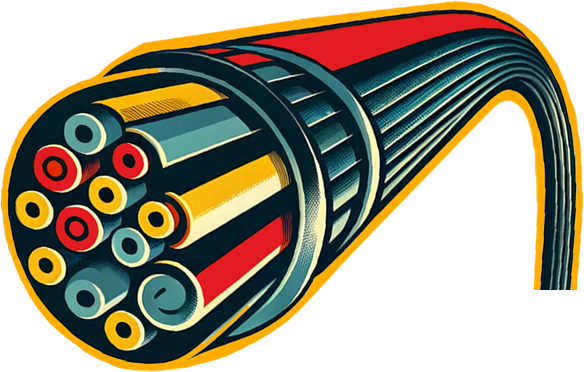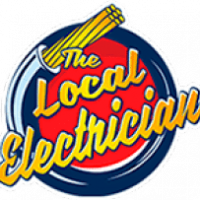Have you ever faced a flickering light or a dead outlet in your home and wondered what to do?
Electrical issues are not just inconvenient; they can be downright dangerous if not addressed properly.
In this article, we delve into the world of electrical repairs, offering you a wealth of knowledge to tackle these challenges with confidence. From understanding the basics to mastering advanced techniques, we’ve got you covered.
What is Electrical Repairs?
Electrical repairs, a term that might seem straightforward, holds immense significance in the realm of home maintenance.
As a homeowner, understanding what this entails is crucial for the safety, efficiency, and longevity of your home’s electrical system.
Electrical repairs can range from simple tasks, such as replacing a worn-out socket or fixing a light fixture, to more complex operations like upgrading your entire electrical panel or rewiring a section of your home.
At its core, electrical repairs involve diagnosing and fixing problems within the electrical system of a building. This could include tasks like repairing or replacing wiring, outlets, switches, and circuit breakers.
The importance of these repairs cannot be overstated, as electrical issues are not just about inconvenience; they pose serious safety risks. Faulty wiring or malfunctioning electrical appliances can lead to electric shocks or fires, endangering your family and property.
For the average homeowner, basic electrical repairs might include fixing a tripped circuit breaker, replacing a faulty light switch, or installing a new ceiling fan. These are tasks that, with a bit of knowledge and the right tools, can often be done safely and effectively. However, it’s essential to recognize your limits.
Electrical work can be dangerous, and there’s a fine line between a simple DIY fix and a project that requires professional expertise.
Professional electricians bring a level of knowledge and experience that is crucial for handling more complex repairs. These experts can tackle issues like faulty wiring, short circuits, and electrical upgrades.
They ensure that all work is done in compliance with local building codes and safety standards, which is vital for both the safety of your home and its future resale value.
Moreover, electrical repairs are not just about fixing problems. They are also an opportunity to upgrade your home’s electrical system, making it more efficient and suited to modern power demands.
With the increasing number of electronic devices in homes today, older electrical systems might struggle to keep up, leading to overloaded circuits and potential hazards. Upgrading your system can not only improve safety but also enhance the functionality and efficiency of your home, potentially reducing your energy bills.
electrical repairs are a critical aspect of home maintenance, ensuring the safety, efficiency, and functionality of your electrical system.
Whether it’s a simple DIY fix or a complex project requiring professional intervention, understanding the basics of electrical repairs is an essential skill for any homeowner.
Remember, when in doubt, always consult a professional to ensure the safety and integrity of your home’s electrical system.
The Fundamentals of Home Electricity
Understanding the Service Panel
The service panel, commonly known as the breaker box, is a critical component in your home’s electrical system.
It’s where the main power line from the street connects to your home’s internal network of wires. Inside the panel, you’ll find circuit breakers or fuses for each circuit in your home. These breakers are designed to trip and cut off power when a circuit is overloaded, preventing potential electrical fires or damage.
Understanding how to safely reset a tripped breaker is a fundamental skill in home electrical repairs.
Circuit Layout and Functionality
Each circuit in your home is designed to supply electricity to a specific area or type of appliance.
For instance, you might have separate circuits for your kitchen appliances, lighting, and outlets in living areas.
Knowing which breaker controls which part of your home is essential for both safety and troubleshooting. Labeling your circuit breakers can save time and confusion during electrical repairs.
Wiring Basics
Your home’s wiring is the network that carries electricity from the service panel to outlets, switches, and fixtures.
There are typically three types of wires: hot (usually black or red, carrying the current), neutral (usually white, completing the circuit), and ground (usually green or bare copper, providing a safe path for excess electricity).
Understanding the role of each type of wire is crucial for safely performing any electrical repairs.
Recognizing Signs of Electrical Issues
Being able to identify potential electrical problems is key. Signs like flickering lights, buzzing sounds from outlets or switches, and frequent tripping of circuit breakers are indicators of underlying issues.
Recognizing these signs early can prevent more serious problems and ensure that repairs are carried out timely.
Safety Precautions in Electrical Repairs
Safety should always be your top priority when dealing with electricity. Always turn off the power at the service panel before starting any repair work.
Use a voltage tester to confirm that circuits are de-energized. Additionally, wearing rubber-soled shoes and using insulated tools can provide extra protection against electrical shocks.
Regular Maintenance and Inspections
Regularly inspecting your electrical system can help identify issues before they become serious problems. This includes checking for loose outlets, frayed wires, and ensuring that all fixtures and appliances are functioning correctly.
Preventative maintenance is a key aspect of home electrical care and can extend the life of your system while ensuring safety.
Recognizing Common Components in Electrical Repairs
Understanding Outlets
Outlets are critical components in your home’s electrical system, providing power to various appliances and devices.
There are different types of outlets, including standard outlets, GFCI (Ground Fault Circuit Interrupter) outlets typically found in bathrooms and kitchens, and AFCI (Arc Fault Circuit Interrupter) outlets used for fire prevention.
Familiarizing yourself with these types can help you identify issues such as a non-functioning outlet or one that trips frequently, indicating a potential safety hazard.
Switches and Their Functions
Switches are the gatekeepers of your home’s electrical system, controlling the flow of electricity to lights and appliances.
They come in various types, including single-pole switches (most common), three-way switches (used across multiple locations), and dimmer switches (for adjustable lighting).
Understanding how these switches operate is essential for troubleshooting issues like a switch that doesn’t turn on or off a light, or one that causes flickering.
Light Fixtures and Bulbs
Light fixtures are not only functional but also contribute to the aesthetics of your home. They range from ceiling and wall-mounted fixtures to lamps and outdoor lighting. Each fixture type may have specific requirements in terms of bulb type and wattage.
Recognizing signs of wear or damage in fixtures, such as loose connections or corrosion, is important for maintaining proper illumination and safety in your home.
Circuit Breakers and Fuses
Circuit breakers and fuses are safety mechanisms that protect your home from electrical overloads and short circuits.
Breakers are found in modern homes and can be reset when tripped, while fuses, found in older homes, need to be replaced when blown.
Knowing the location of your breaker box or fuse box and understanding how to reset a breaker or replace a fuse are fundamental skills in electrical repairs.
Wiring Essentials
Wiring is the network that connects all electrical components in your home. It includes hot (live), neutral, and ground wires, each serving a specific purpose.
Identifying the color coding of these wires (black or red for hot, white for neutral, and green or bare copper for ground) is crucial for any repair work.
Inspecting wiring for signs of damage, such as fraying or discoloration, can help prevent electrical failures.
Safety Devices
Safety devices like GFCIs and AFCIs are essential for preventing electrical accidents.
GFCIs protect against electric shock, particularly in damp areas, while AFCIs protect against fires caused by arcing faults. Testing these devices regularly to ensure they are functioning correctly is an important aspect of home electrical maintenance.
Understanding Circuit Load in Electrical Repairs
Basics of Circuit Load
Circuit load refers to the amount of electrical current flowing through a circuit, measured in amperes (amps).
Each circuit in your home is designed to handle a specific maximum load, which is crucial to prevent overloading.
Overloading occurs when the total wattage of all devices connected to a circuit exceeds its capacity, leading to potential hazards like tripped circuit breakers or electrical fires. Understanding the load capacity of your circuits is a fundamental aspect of electrical safety and maintenance.
Calculating Circuit Load
To calculate the load of a circuit, add up the wattage of all devices and appliances connected to it.
For example, if you have a circuit with a 15-amp breaker, the safe load is typically around 80% of its capacity, which is 12 amps. To convert this to watts, multiply by the voltage (usually 120 volts in standard circuits), giving you a maximum safe load of 1440 watts.
Being aware of these calculations helps in distributing your electrical devices appropriately across different circuits.
Identifying High-Wattage Appliances
Some appliances consume a significant amount of power, such as air conditioners, space heaters, and hair dryers. These high-wattage appliances should ideally be on dedicated circuits to prevent overloading.
It’s important to identify these appliances in your home and understand their impact on your electrical system’s load.
Signs of Overloaded Circuits
Recognizing the signs of an overloaded circuit is key to preventing electrical issues. These signs include flickering or dimming lights, outlets or switches that are warm to the touch, buzzing sounds from electrical panels, and circuit breakers that frequently trip.
If you notice any of these signs, it’s crucial to reduce the load on the affected circuit and consider having it evaluated by a professional.
Managing Circuit Load
To manage the load on your circuits effectively, consider spreading high-wattage appliances across multiple circuits.
Using power strips with built-in circuit breakers can provide an extra layer of protection. Additionally, upgrading your electrical panel or adding new circuits might be necessary for older homes or in situations where the current system cannot safely handle the load.
Regular Circuit Inspections
Regular inspections of your electrical system can help identify potential overload issues before they become serious.
This includes checking the condition of wiring, ensuring that all connections are secure, and verifying that your home’s electrical load is distributed safely and efficiently.
Safety First: Precautions and Preparations in Electrical Repairs
Understanding the Risks
Before diving into any electrical repairs, it’s crucial to understand the risks involved.
Electricity is a powerful force that can cause serious injury or even death if not handled properly. The risks include electric shock, electrical burns, and the potential for causing a fire. Awareness of these dangers is the first step in ensuring your safety.
Turning Off the Power
The most fundamental safety precaution is to turn off the power to the area where you will be working. This is typically done at the circuit breaker or fuse box.
Ensure that the power is completely off by using a non-contact voltage tester. This simple tool can be a lifesaver, confirming that there is no current flowing in the wires you’ll be handling.
Personal Protective Equipment (PPE)
Wearing the right personal protective equipment is essential. This includes rubber-soled shoes to insulate your body from the ground, and gloves made of rubber or another non-conductive material.
Safety glasses should also be worn to protect your eyes from any sparks or debris.
Using Insulated Tools
When working on electrical repairs, it’s important to use tools that are specifically designed for electrical work. These tools have insulated handles that reduce the risk of electric shock. This includes screwdrivers, pliers, wire strippers, and cutters.
Always inspect your tools before use to ensure the insulation is intact and the tool is in good condition.
Understanding Your Home’s Wiring
Before starting any repair, familiarize yourself with your home’s wiring system. This includes knowing the color coding of wires (black for hot, white for neutral, and green or bare for ground) and the layout of your home’s electrical circuits.
This knowledge helps prevent mistakes that could lead to dangerous situations.
Avoiding Water
Always avoid working on electrical components in wet or damp conditions. Water is a conductor of electricity, and working in such conditions greatly increases the risk of electric shock.
If you must work in an area that has been exposed to water, ensure that the area is completely dry before beginning.
When to Call a Professional
If you’re ever in doubt about your ability to safely complete an electrical repair, it’s best to call a professional.
Licensed electricians have the training and experience to handle complex electrical issues safely. Remember, no electrical repair is worth risking your safety.
Common Electrical Problems and Solutions
Dealing with Short Circuits
A short circuit is one of the most common electrical problems, occurring when a hot wire comes into contact with a neutral wire. This can cause a sudden surge of electricity that can trip breakers and potentially cause fires.
To fix a short circuit, first, turn off the power. Then, inspect the affected circuit and devices for damaged wires or loose connections. Replacing or repairing the faulty components and ensuring all connections are secure can often resolve the issue.
Tripped Circuit Breakers
Circuit breakers are designed to trip and shut off power when they detect an overload, preventing damage and potential hazards.
If a breaker trips, first unplug all devices on that circuit. Then, reset the breaker by turning it off and then back on. If it trips again immediately, you may have a more serious wiring issue that requires professional attention.
Regularly tripping breakers can also indicate that your home’s electrical load exceeds its capacity, in which case you might need to upgrade your electrical panel.
Flickering or Dimming Lights
Flickering or dimming lights can be caused by a variety of issues, from simple to complex. Often, it’s a sign of a poor connection in the circuit. Tightening loose bulbs or repairing loose wiring can often solve the problem.
If the issue persists throughout the house, it could indicate a more serious problem with your home’s electrical system, such as an overloaded circuit or faulty wiring, and may require professional evaluation.
Faulty Outlets
Outlets can become faulty over time due to wear and tear, loose connections, or internal damage. If an outlet stops working, first check if the breaker has tripped.
If the breaker is fine, turn off the power to the outlet and check for any loose connections. Replacing the outlet is often the best solution if it appears old or damaged.
GFCI Issues
Ground Fault Circuit Interrupters (GFCIs) are designed to protect against electrical shock by shutting off power when a fault is detected. If a GFCI outlet repeatedly trips, it could indicate a ground fault in the circuit.
Resetting the GFCI by pressing the reset button may resolve the issue. If it continues to trip, inspect the connected appliances for faults or consult a professional.
Electrical Surges and Spikes
Surges and spikes can occur due to lightning strikes, power outages, or issues with the utility company’s equipment. These can damage appliances and electronics. Using surge protectors can help protect your devices.
If surges are frequent, it’s advisable to have a professional inspect your home’s grounding system and electrical panel.
Tools and Materials for Electrical Repairs
Essential Tools for Basic Electrical Work
To handle electrical repairs effectively, certain tools are indispensable. A screwdriver set, including both flathead and Phillips head, is essential for removing and securing outlet covers and switch plates.
Wire strippers are crucial for cutting and stripping insulation from wires. Needle-nose pliers help in bending wires and reaching into small spaces, while side-cutting pliers are great for cutting wires.
A voltage tester is a must-have for ensuring that power is off before starting any work. For more advanced tasks, a multimeter can be used to measure voltage, current, and resistance.
Specialized Electrical Repair Tools
For more complex electrical repairs, additional specialized tools may be required. These include a circuit finder for identifying specific circuits in your breaker box, a wire fish tape for pulling wire through conduit or walls, and a cable ripper for safely exposing the inner wires of a cable.
An electrical tape is essential for insulating and securing wire connections, while a non-contact voltage tester provides a safe way to check for live wires without direct contact.
Materials for Electrical Repairs
Various materials are often needed in electrical repairs. Wire nuts are used to connect wires safely, and junction boxes provide a secure enclosure for wire connections.
Different types of electrical wire are needed depending on the specific repair, including THHN wire for most indoor applications and UF cable for outdoor or direct burial. Outlet and switch replacements are common materials, as are faceplates for a finished look.
Safety Equipment
Safety should always be a priority when working with electricity. Rubber gloves and safety goggles protect against electric shocks and flying debris.
A fire extinguisher rated for electrical fires should be readily accessible in case of an emergency.
Organizational Tools
Keeping your tools and materials organized is key to efficient electrical repairs. A tool belt or electrician’s pouch can keep your most-used tools within easy reach.
A well-organized toolbox or storage system for your materials can save time and frustration during a repair job.
When to Call a Professional for Electrical Repairs
Recognizing Your Limits
While DIY electrical repairs can be satisfying and cost-effective, there are situations where calling a professional is not just advisable, but necessary.
Recognizing the limits of your skills and knowledge is crucial for your safety and the integrity of your home’s electrical system. Complex tasks like installing new circuits, extensive rewiring, or dealing with the main power line should always be left to licensed electricians.
Signs of Major Electrical Problems
Certain signs indicate that it’s time to call a professional. These include frequent tripping of circuit breakers, a persistent burning smell from outlets or switches, and any sparks or visible arcing.
If your lights dim when using appliances, it could signal an overloaded circuit or a serious issue with your home’s wiring. In these cases, professional assessment and repair are essential to prevent potential hazards.
Upgrading Your Electrical System
If you live in an older home, your electrical system may not be equipped to handle modern electrical loads.
Upgrading your system, including the service panel, circuits, and wiring, is a complex task that requires a professional electrician. They can ensure that your system meets current safety standards and is capable of supporting your electrical needs.
Dealing with Code Compliance
Electrical work often needs to comply with local building codes. Professional electricians are up-to-date with these regulations and can ensure that any repairs or upgrades are code-compliant.
This is especially important if you’re renovating or selling your home, as non-compliant electrical work can lead to legal issues and additional costs.
Safety Concerns
Safety is the most compelling reason to hire a professional. Electrical work can be dangerous, and improper repairs can lead to electrical shocks, fires, and other hazards.
Professional electricians have the training, experience, and equipment to perform electrical repairs safely.
Quality and Warranty
Professional electricians not only provide safety and compliance but also ensure the quality of their work.
Many offer warranties on their services, giving you peace of mind that if something goes wrong, it will be fixed without additional costs.
Here’s everything else you need to know about electrical repairs, ensuring you’re well-equipped to handle any situation.
Maximizing Efficiency in Electrical Repairs
Understanding Energy Efficiency in Electrical Systems
In the realm of electrical repairs, energy efficiency is a crucial aspect. Efficient electrical systems not only save on energy costs but also reduce the environmental impact.
Upgrading to energy-efficient appliances, installing LED lighting, and ensuring your home’s wiring is up to date are key steps in enhancing efficiency. Regular maintenance checks can identify areas where energy is being wasted, such as outdated appliances or poor insulation around wiring.
Innovative Technologies in Electrical Repairs
The field of electrical repairs is constantly evolving with new technologies. Smart home technology, for instance, allows for greater control and monitoring of your home’s electrical system.
Smart thermostats, automated lighting systems, and energy monitors can contribute significantly to reducing energy consumption. Embracing these technologies during electrical repairs or upgrades can lead to a more efficient and modernized home.
Safety and Sustainability in Electrical Work
Sustainability in electrical repairs involves using materials and methods that are environmentally friendly. This includes recycling old wiring, properly disposing of hazardous materials, and choosing sustainable materials for new installations.
Additionally, implementing safety measures like proper grounding and using energy-efficient tools can contribute to a safer and more sustainable approach to electrical repairs.
Cost-Effective Electrical Repair Strategies
Cost-effectiveness is a key consideration in electrical repairs. This involves choosing repairs and upgrades that offer the best value in the long term.
For instance, opting for higher quality, durable materials may have a higher upfront cost but can save money in the long run due to their longevity and efficiency. Seeking professional advice on cost-effective solutions can help in making informed decisions about electrical repairs.
Future-Proofing Your Electrical System
Future-proofing your electrical system is about anticipating future needs and technologies. This could involve installing additional circuits to accommodate potential future electrical demands or wiring your home for smart home capabilities.
Future-proofing during electrical repairs ensures that your home remains compatible with new technologies and efficient in its energy use.
Incorporating these aspects into your approach to electrical repairs can lead to a more efficient, sustainable, and cost-effective electrical system in your home.
By staying informed about the latest technologies and best practices, you can ensure that your electrical repairs not only address current issues but also prepare your home for the future.
Top 5 Strategies for Effective Electrical Repairs
1. Comprehensive Inspection of Electrical Systems
Conducting regular inspections of your electrical system is a cornerstone strategy in electrical repairs. This involves a thorough check of outlets, switches, and circuit breakers.
Look for any signs of damage, such as discoloration, burning smells, or loose connections. Loose wires or malfunctioning outlets not only compromise the efficiency of your electrical system but also pose significant fire risks.
Addressing these issues promptly can avert many common electrical problems, ensuring the safety and longevity of your system.
2. Maintaining Cleanliness of Breakers and Outlets
Over time, dust and debris can accumulate on electrical components, leading to inefficiencies and potential hazards.
Regular cleaning of breakers and outlets is crucial. Use a dry, lint-free cloth to gently wipe away any buildup. This simple yet effective practice helps maintain optimal functionality and prevents issues like overheating or poor electrical connections, which are common precursors to more significant electrical problems.
3. Managing Outlet Load to Prevent Overloading
Outlet overloading is a frequent cause of electrical issues and can lead to circuit overloads and tripping.
To avoid this, be mindful of the number of devices plugged into a single outlet. Utilize power strips with surge protectors for areas with multiple devices, and consider installing additional outlets in high-usage areas.
This strategy not only enhances safety but also distributes the electrical load more evenly, reducing the strain on your electrical system.
4. Diligent Care of Electrical Cords
Electrical cords are often the lifeline of your appliances and devices. Regular inspection for damage, such as fraying or cuts, is essential. Damaged cords pose a significant risk of fire and electrical accidents.
Prompt replacement of any compromised cords is a key preventive measure in electrical safety. Additionally, ensure cords are not stretched too tightly or running under carpets, as this can lead to wear and damage over time.
5. Routine Maintenance of Electrical Appliances
Electrical appliances, from major appliances like refrigerators to smaller gadgets like toasters, require regular maintenance.
Check for any signs of wear, ensure they are correctly and safely plugged in, and follow the manufacturer’s guidelines for maintenance. This not only prevents electrical issues but also prolongs the life of your appliances.
Regular maintenance can identify potential problems before they escalate, contributing to a safer and more efficient home environment.
Incorporating these strategies into your routine can significantly enhance the safety and efficiency of your home’s electrical system. Regular maintenance, careful usage, and prompt attention to potential hazards are key to preventing common electrical problems and ensuring a well-functioning electrical system.
The Local Electrician TX: Your Go-To for Expert Electrical Repairs
Comprehensive Electrical Services
The Local Electrician TX stands as a beacon of excellence in electrical repairs and services. Catering to a broad range of electrical needs, they offer everything from basic troubleshooting and repairs to complete system upgrades and installations.
Their expertise covers residential and commercial spaces, ensuring that whether you’re a homeowner or a business owner, your electrical systems are in capable hands.
Specialized Repair Solutions
Electrical repairs can range from simple fixes to complex issues.
The Local Electrician TX specializes in diagnosing and resolving all types of electrical problems. This includes fixing faulty wiring, repairing or replacing outdated panels, installing new lighting systems, and much more.
Their team of skilled electricians ensures that every repair is conducted with the utmost precision and safety.
Preventative Maintenance and Safety Inspections
One of the key services offered by The Local Electrician TX is preventative maintenance. Regular inspections and maintenance can prevent major electrical issues, saving you time and money in the long run.
Their comprehensive safety inspections are designed to identify potential hazards before they become serious problems, ensuring your electrical system is not only efficient but also safe.
Emergency Services
Electrical emergencies can happen at any time, and The Local Electrician TX understands the urgency of these situations. They offer prompt and reliable emergency services to address urgent electrical issues.
Whether it’s a power outage, a blown fuse, or any other emergency, their team is ready to provide quick and effective solutions.
Serving Multiple Locations
The Local Electrician TX serves a wide range of locations, ensuring that quality electrical repair services are accessible to many.
Their service areas include Pecan Grove, Meadows Place, Stafford, Sugarland, Richmond, Rosenberg, Fulshear, Jersey Village, Heights, Memorial, Energy Corridor, Missouri City, Bellaire, West University, Spring Valley Village, Houston, and Katy. No matter where you are in these areas, The Local Electrician TX is just a call away.
Connecting with The Local Electrician TX
To learn more about their services or to schedule a consultation, visit The Local Electrician TX’s Google My Business page. Here, you can also view customer reviews and ratings, giving you confidence in their commitment to quality and customer satisfaction.
The Local Electrician TX provides a comprehensive range of electrical repair services, emphasizing safety, efficiency, and customer satisfaction.
Their wide coverage across multiple locations ensures that professional electrical help is always within reach.
Conclusion
Understanding and effectively managing electrical repairs in your home is not just about maintaining functionality; it’s about ensuring the safety and efficiency of your living space.
From recognizing common electrical components and understanding circuit loads to knowing when to call professionals like The Local Electrician TX, each aspect plays a crucial role in keeping your electrical system running smoothly.
Regular maintenance, using the right tools, and adhering to safety protocols are key to preventing electrical issues and ensuring a safe home environment.
Remember, electrical repairs are not just a matter of convenience but a critical component of home safety.
Whether you’re tackling a simple repair or facing a complex electrical challenge, the right approach and knowledge can make all the difference. And when in doubt, don’t hesitate to seek professional assistance to ensure the job is done right.
As we wrap up this comprehensive guide on electrical repairs, we invite you to reflect on your own home’s electrical system.
Have you encountered any electrical issues recently, and how did you address them?
Share your experiences and let us know if The Local Electrician TX has been part of your electrical repair journey. Your insights not only contribute to a community of informed homeowners but also emphasize the importance of skilled and reliable electrical repair services.
FAQs
1.What are the most common signs of electrical problems in a home?
Common signs include flickering lights, frequent circuit breaker trips, outlets that are warm to the touch, buzzing sounds from electrical panels, and power outages in parts of the home.
These symptoms can indicate overloaded circuits, faulty wiring, or aging electrical components.
2.How often should I have my home’s electrical system inspected?
It’s recommended to have a professional inspection at least every 10 years for an average home, and every 5 years for homes over 25 years old.
Additionally, an inspection should be considered if you’re purchasing a new home, after major renovations, or if you notice any electrical issues.
3.Can I do electrical repairs myself?
Simple tasks like replacing a light switch or outlet can be done DIY if you have basic knowledge and tools. However, more complex tasks like wiring or panel work should be left to a professional electrician for safety and compliance with local codes.
4.What should I do if my circuit breaker keeps tripping?
First, unplug all devices on that circuit to see if it resets. If it trips again with no load, there might be a wiring issue and you should contact an electrician. Avoid repeatedly resetting the breaker without resolving the underlying problem.
5.Is it safe to use extension cords permanently?
Extension cords are meant for temporary use. Using them permanently can lead to overheating and fire hazards. If you need additional outlets, it’s safer to have an electrician install them.
6.How do I know if my home needs rewiring?
Signs that your home may need rewiring include frequent electrical problems, ungrounded outlets, aluminum wiring, or if the house is over 40 years old.
An inspection by a qualified electrician can provide a definitive answer.
7.What is a GFCI outlet and where should it be installed?
A Ground Fault Circuit Interrupter (GFCI) outlet protects against electric shock by shutting off power if a fault is detected. They are essential in areas with moisture, such as bathrooms, kitchens, and outdoor spaces.
8.Can dimmer switches be used with any light bulb?
Not all light bulbs are compatible with dimmer switches. It’s important to use bulbs that are specifically labeled as dimmable.
Using non-dimmable bulbs with a dimmer can cause flickering and reduce the lifespan of the bulb.
9.What’s the difference between a fuse and a circuit breaker?
Both serve the same purpose – to protect an electrical circuit from overload. A fuse will melt and need replacing when tripped, whereas a circuit breaker can simply be reset.
10.Why do my lights flicker when I use certain appliances?
Flickering lights when using appliances can indicate that the appliance is drawing more power than the circuit can handle, or there may be a loose or faulty wiring connection.
It’s advisable to consult an electrician to assess and resolve the issue.




























